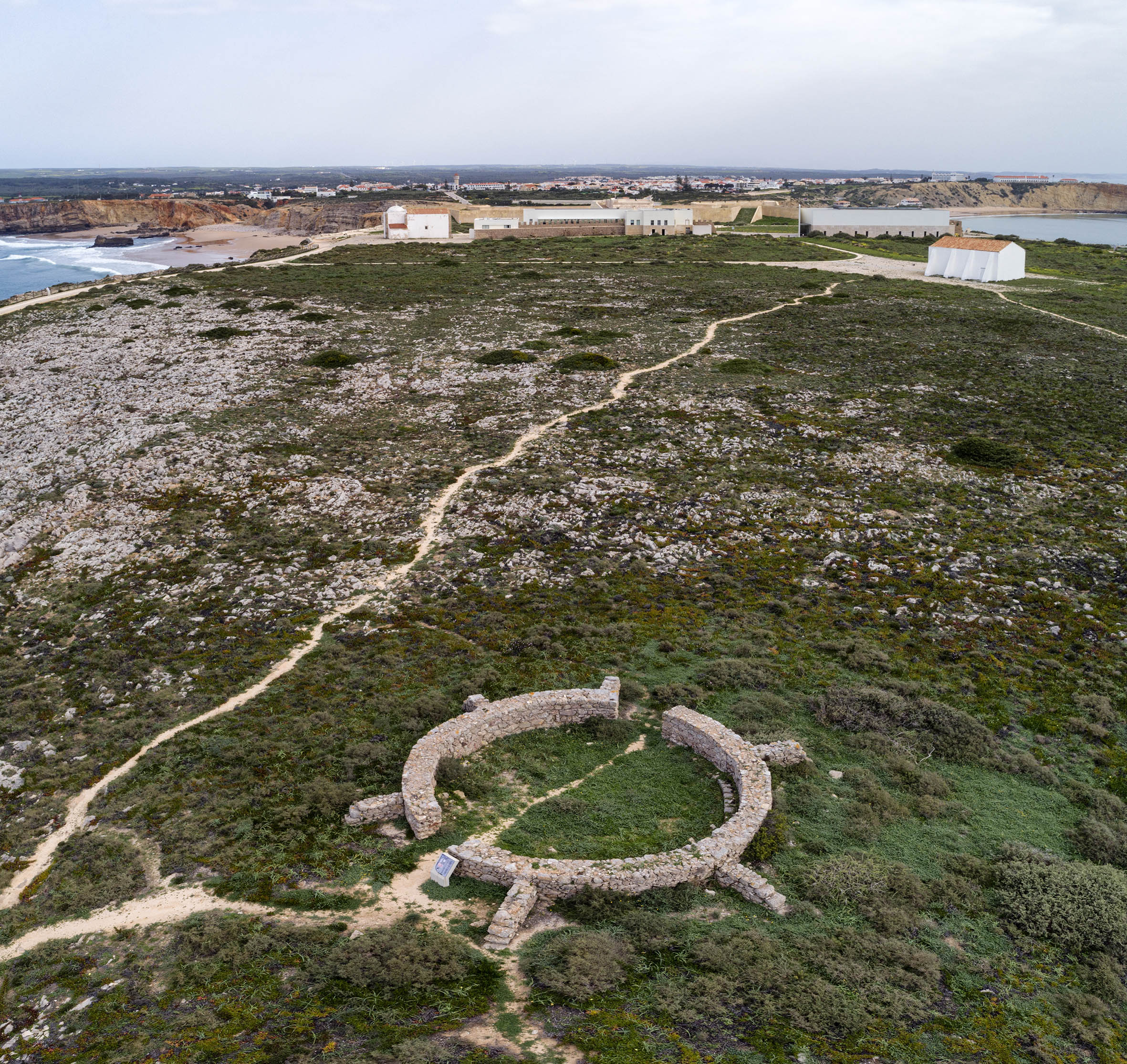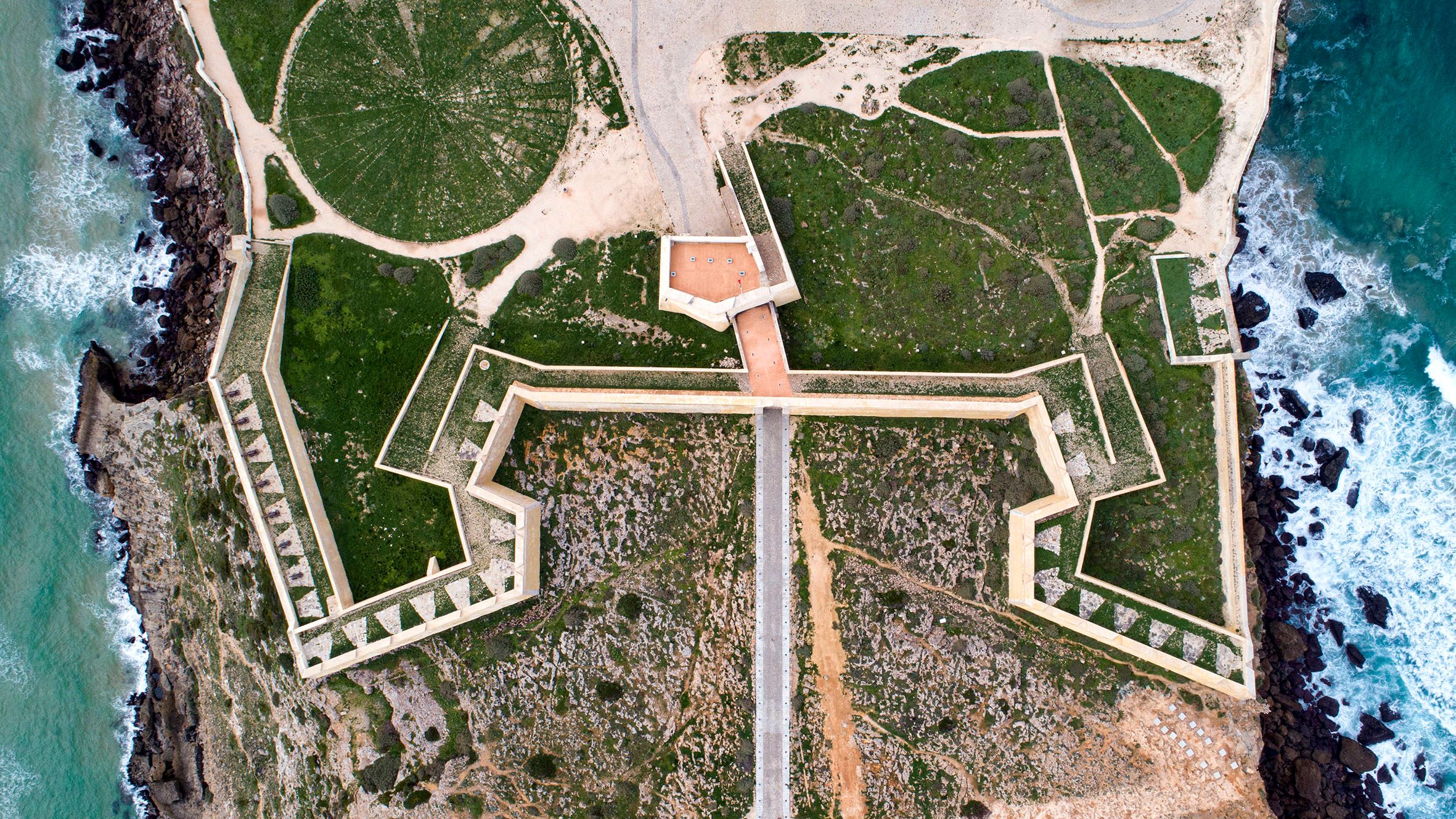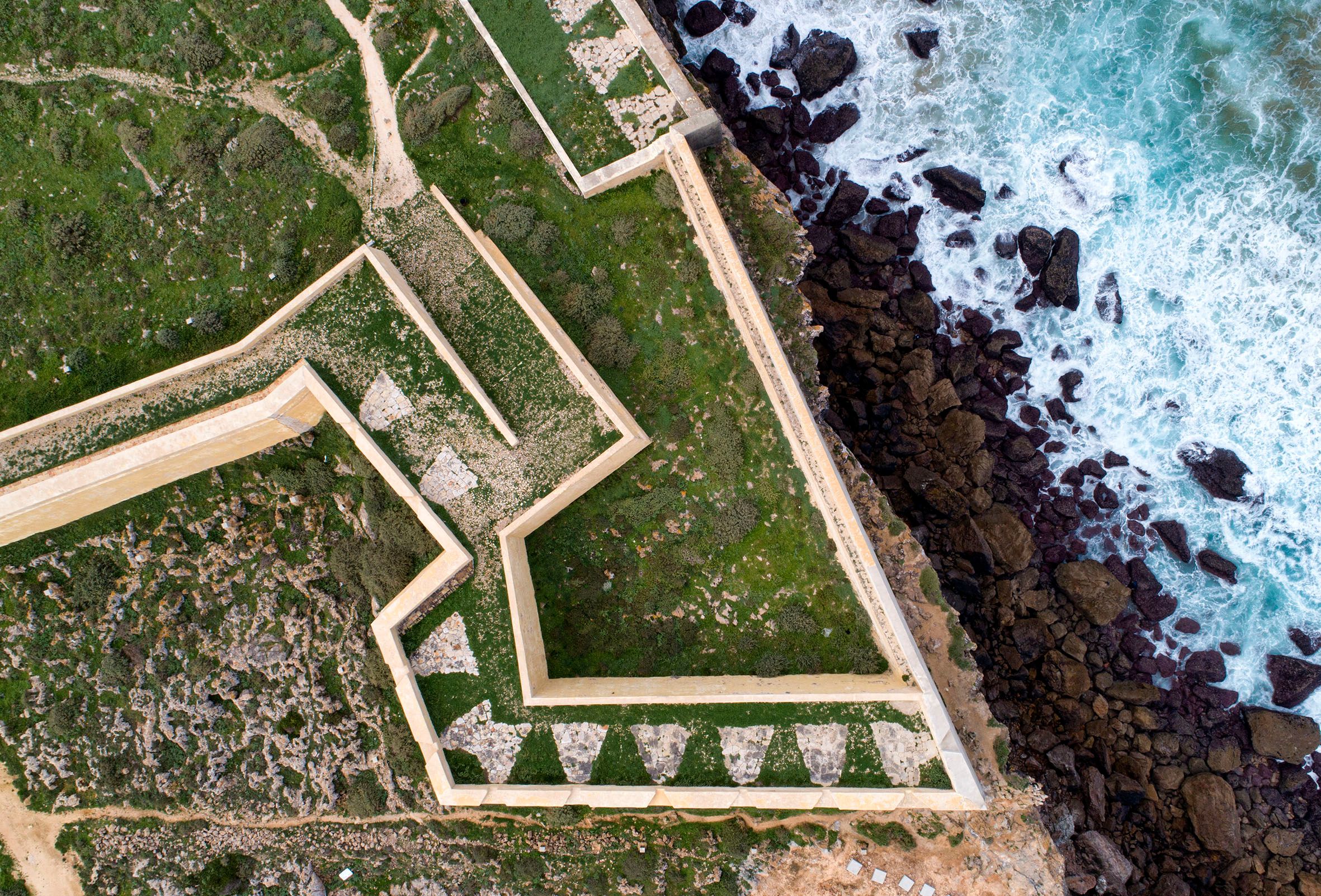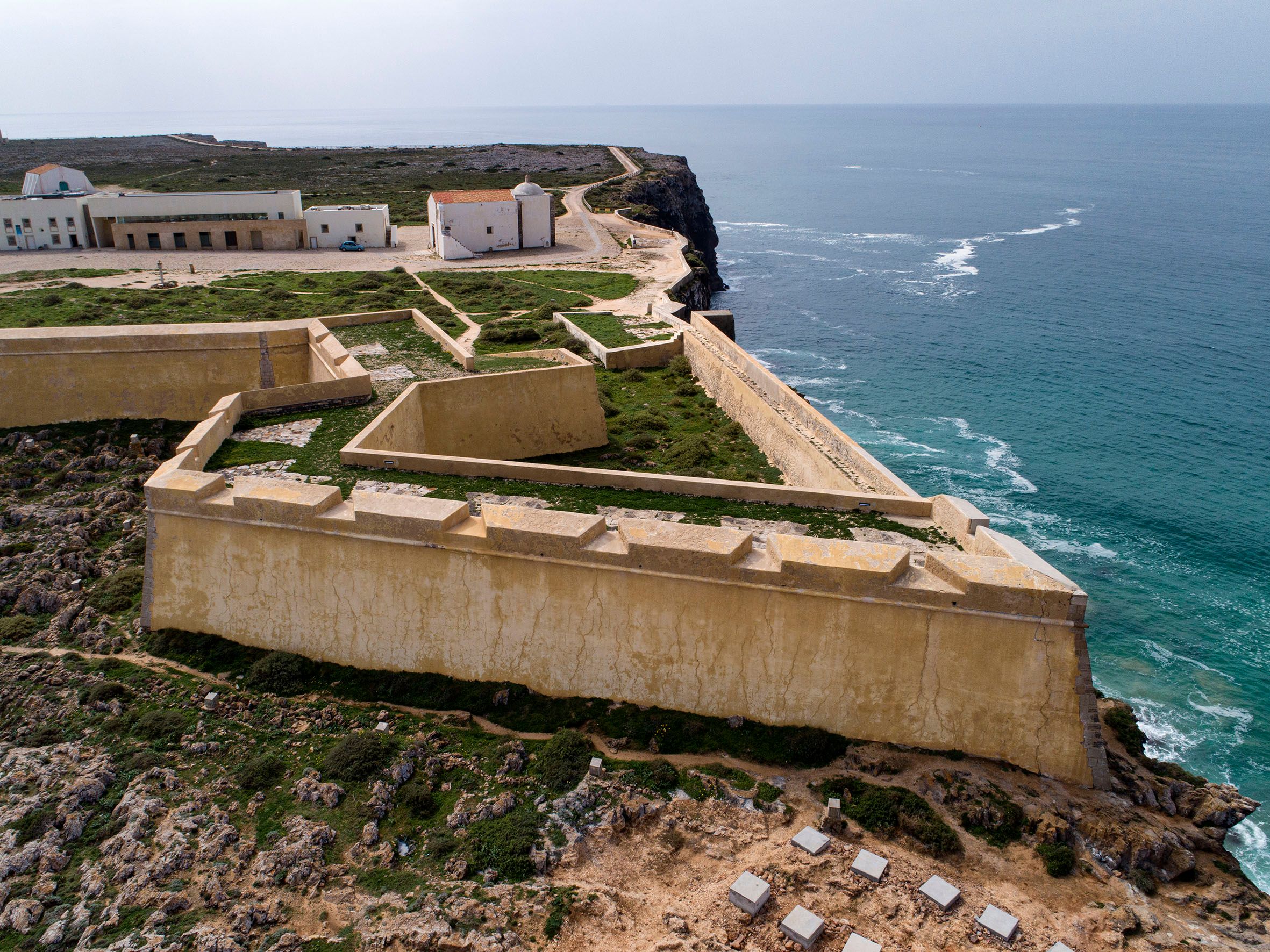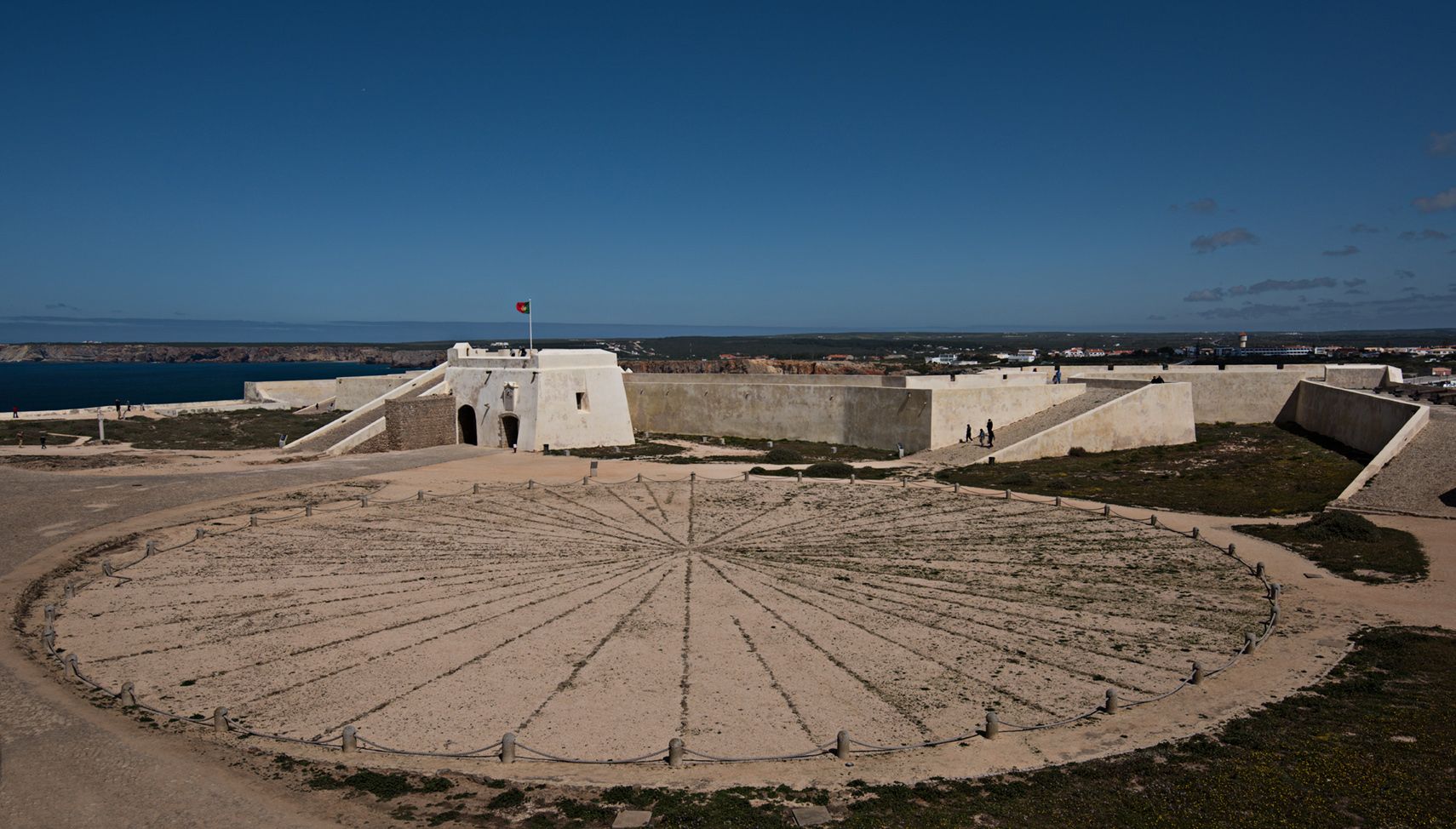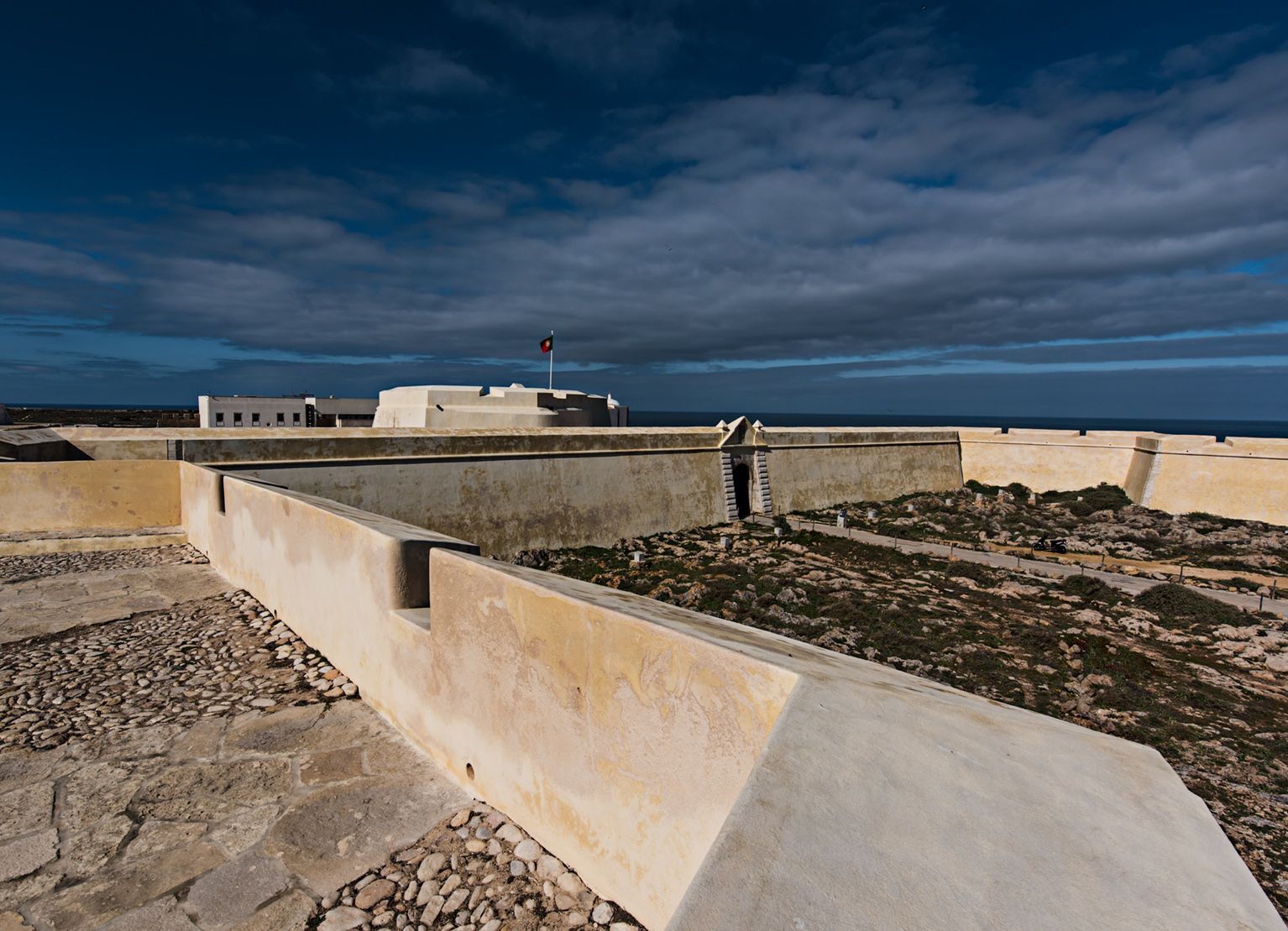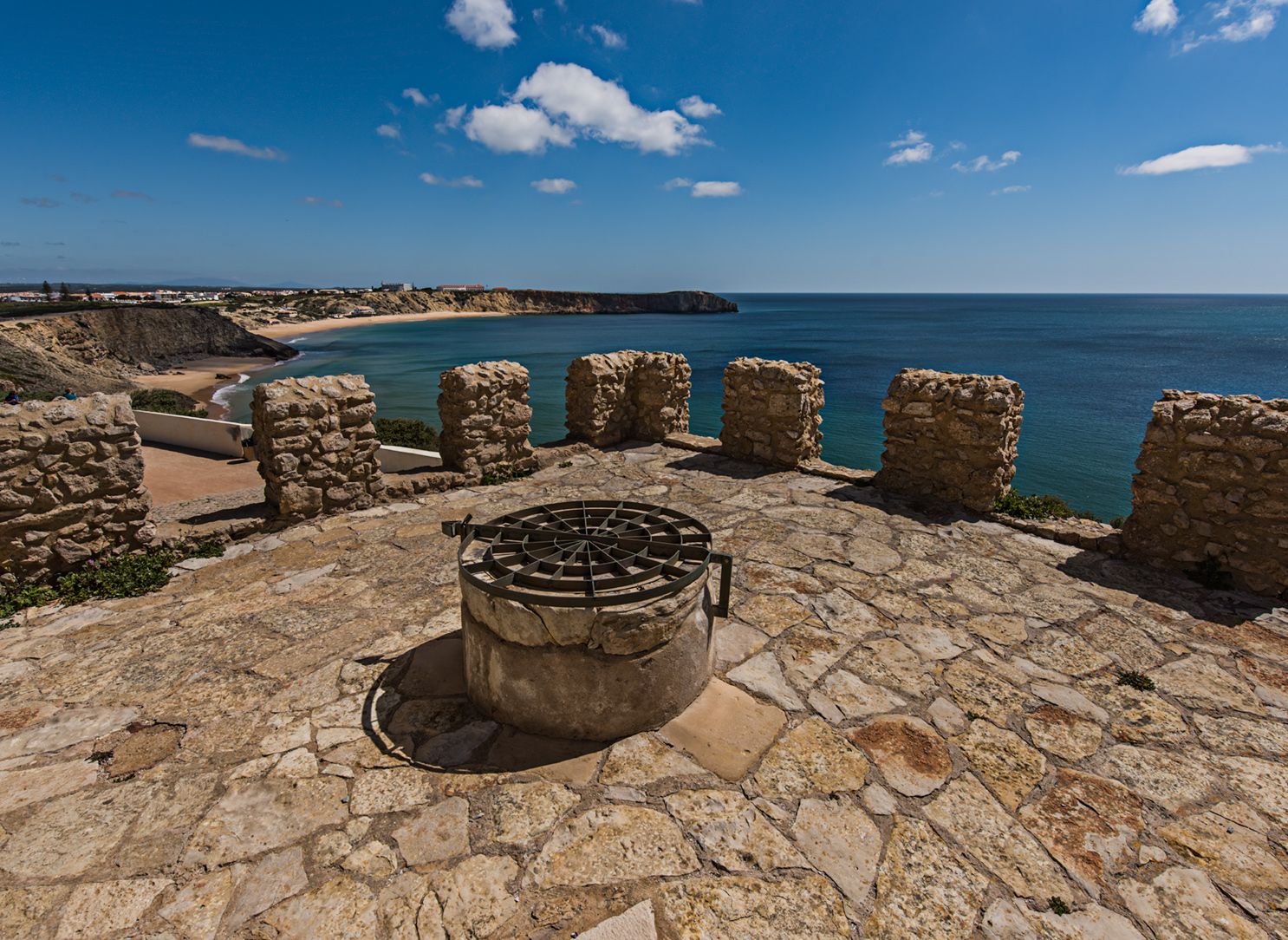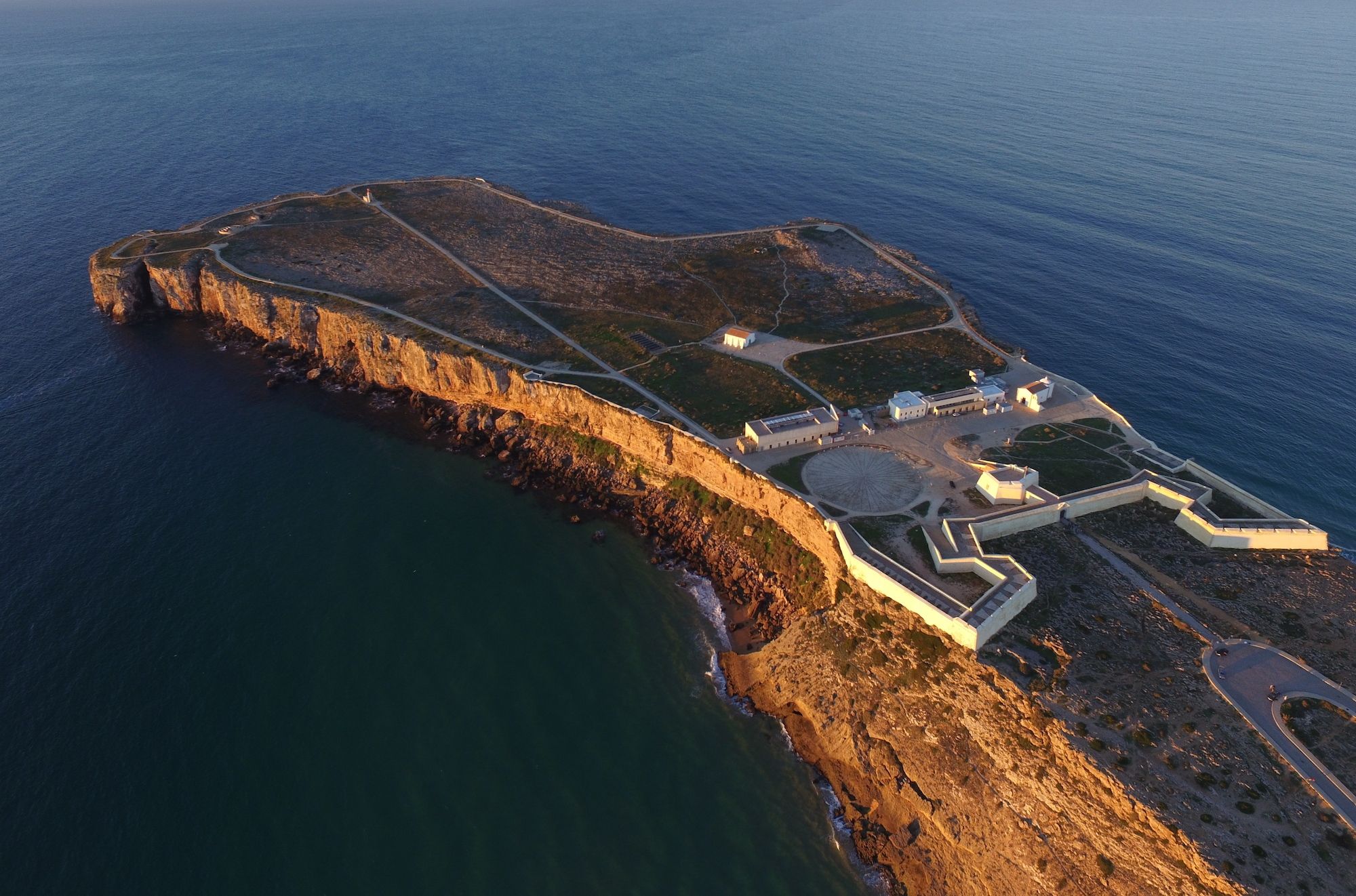The imposing Sagres Fortress is the human extension of the natural rock and was for centuries the main fort of a geostrategic maritime defensive system.
In 1443, the policy of Portuguese expansion in the 15th and 16th centuries led Henry the Navigator to obtain authorization from his brother, the ruling King D. Pedro, for the creation of the Infante Town on the Sagres promontory. Henry the Navigator lived here until he died. Several letters and his last will were written in this Town. He died there in 1460. However, the erosion of the place and the course of history left few remains of this town: traces of a sawtooth wall, a cistern tower, the foundations of a windshield wall (today much restored and crowned with false battlements), the so-called “wind rose”, an enigmatic construction unveiled, by accident, in 1921. And the set, supposedly authentic, of the so-called Correnteza, integrated in the current exhibition module.
Everything else does not go beyond the sixteenth century: the Church of Our Lady of Grace, a building whose reconstructions include the door, which was belatedly applied there; the bulwarked wall, refurbished at the end of the eighteenth century; the old house of the governor of the fort; and a curious building, rebuilt on the site where some suggest, without grounds, was the house of Henry the Navigator.
But it is the mythical nature of the place that appeals to the darker, irrational side of our collective memory. This is evidenced by the controversies surrounding the architectural intervention of João Carreira in the 1990s, who sought to transform the erected area into a useful centre of the great monument which is the entire promontory, respecting the place but without surrendering to to style or historicist poses. In the Correnteza (partially destroyed in the late 1950s), and maintaining the idea of a square between the buildings and the wall, an exhibition centre and visitor support services were arranged, to make the stay in this place of memory more useful.
